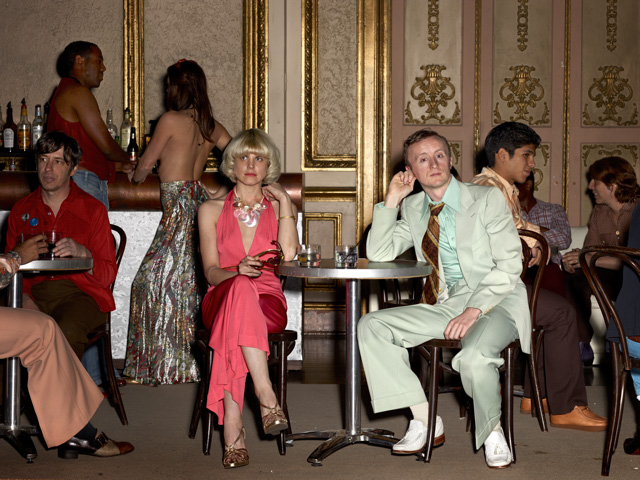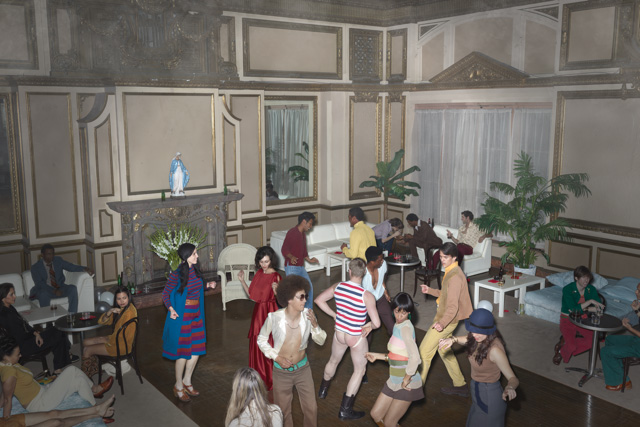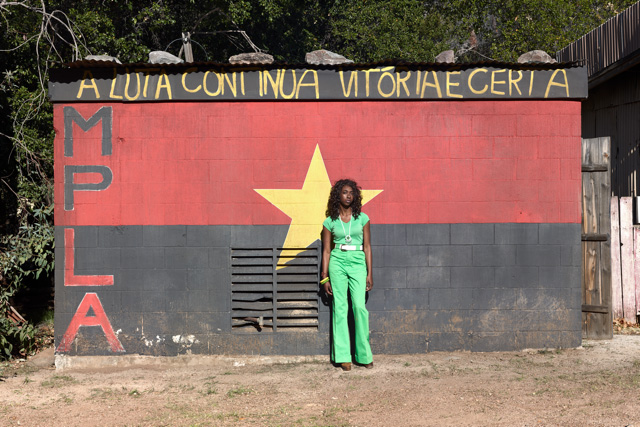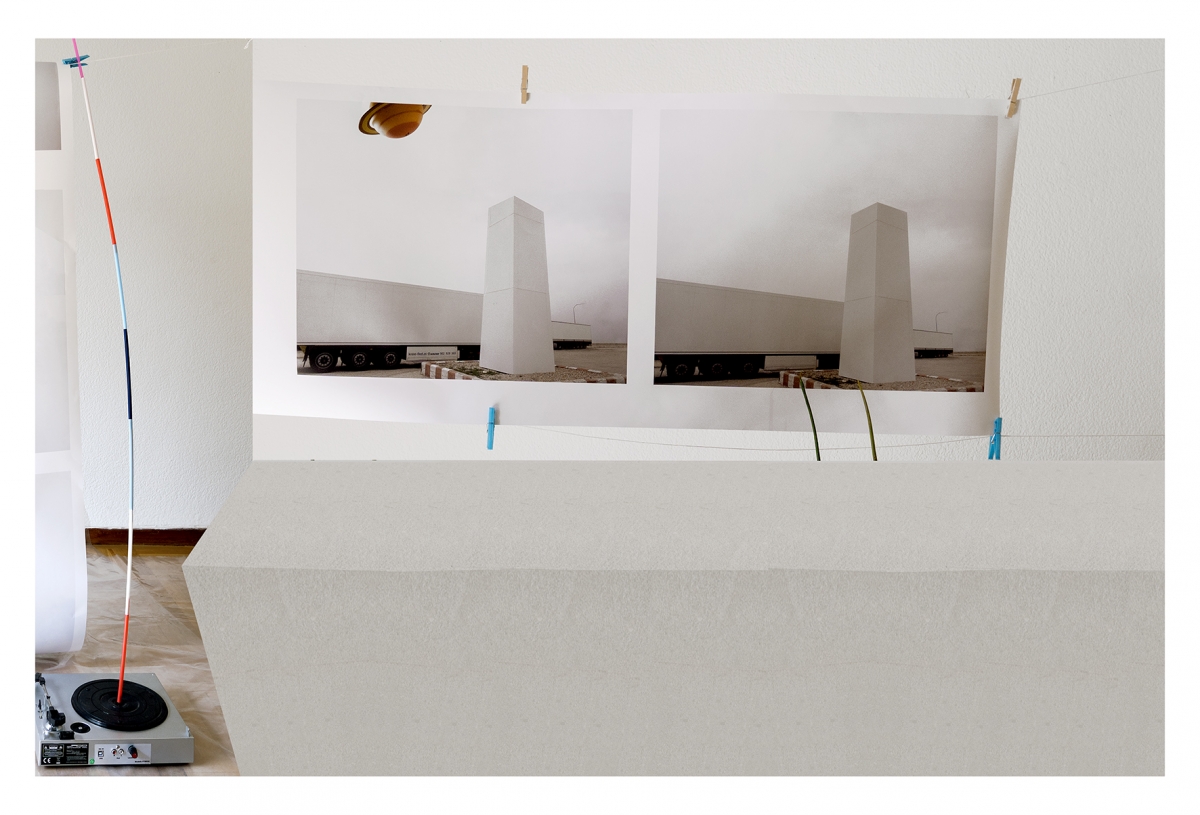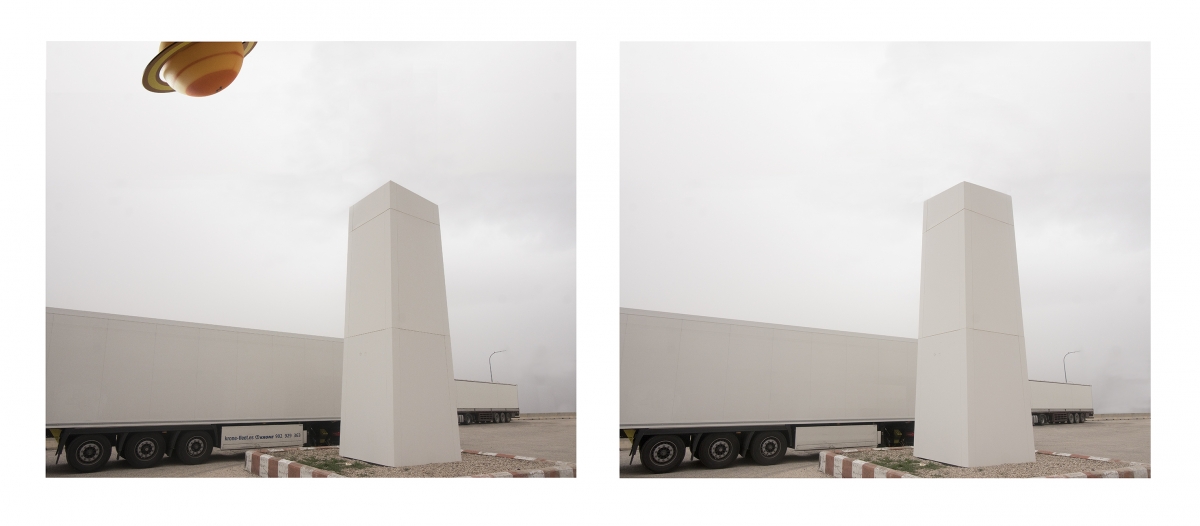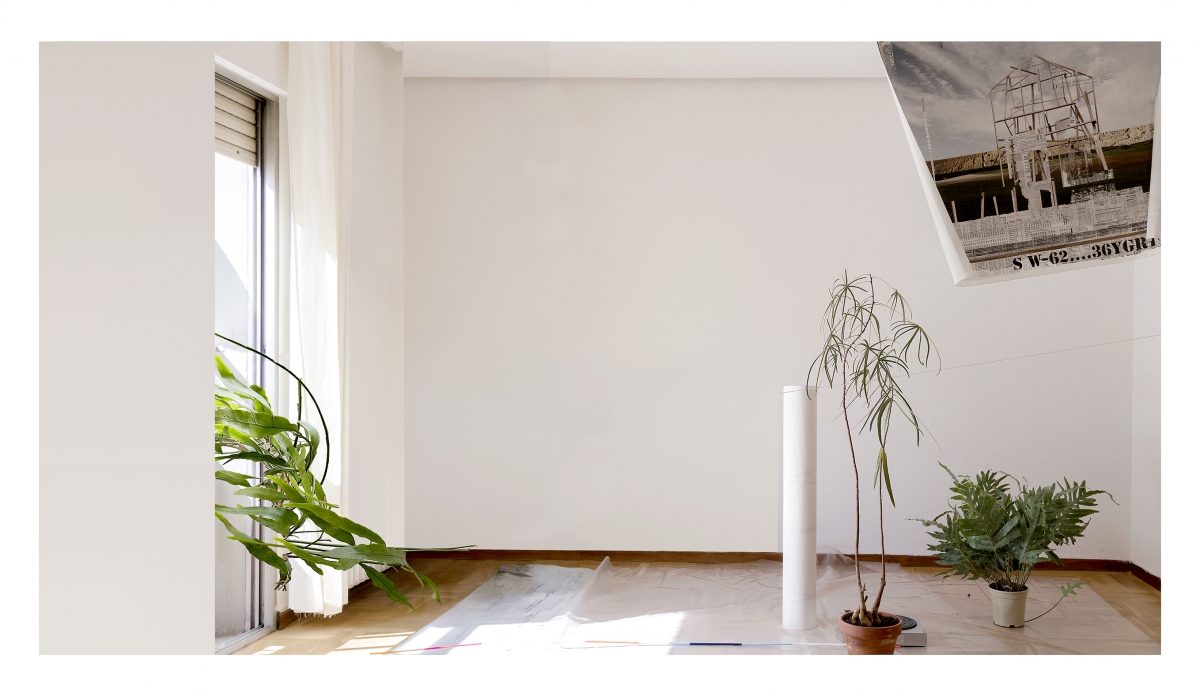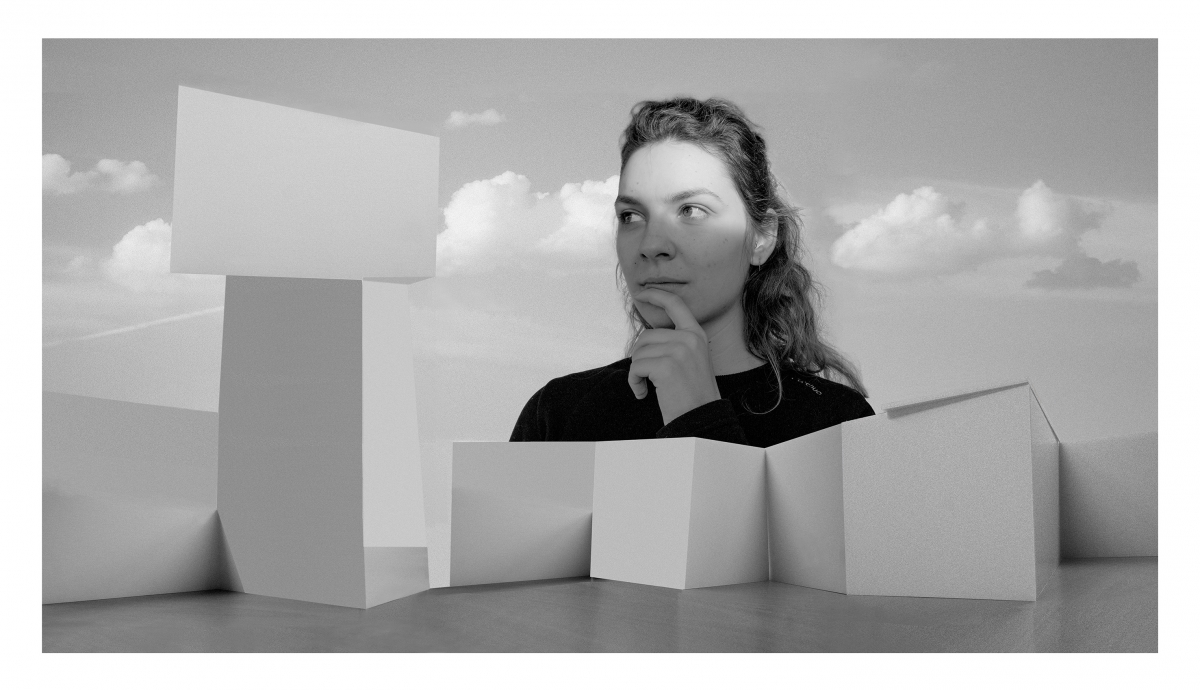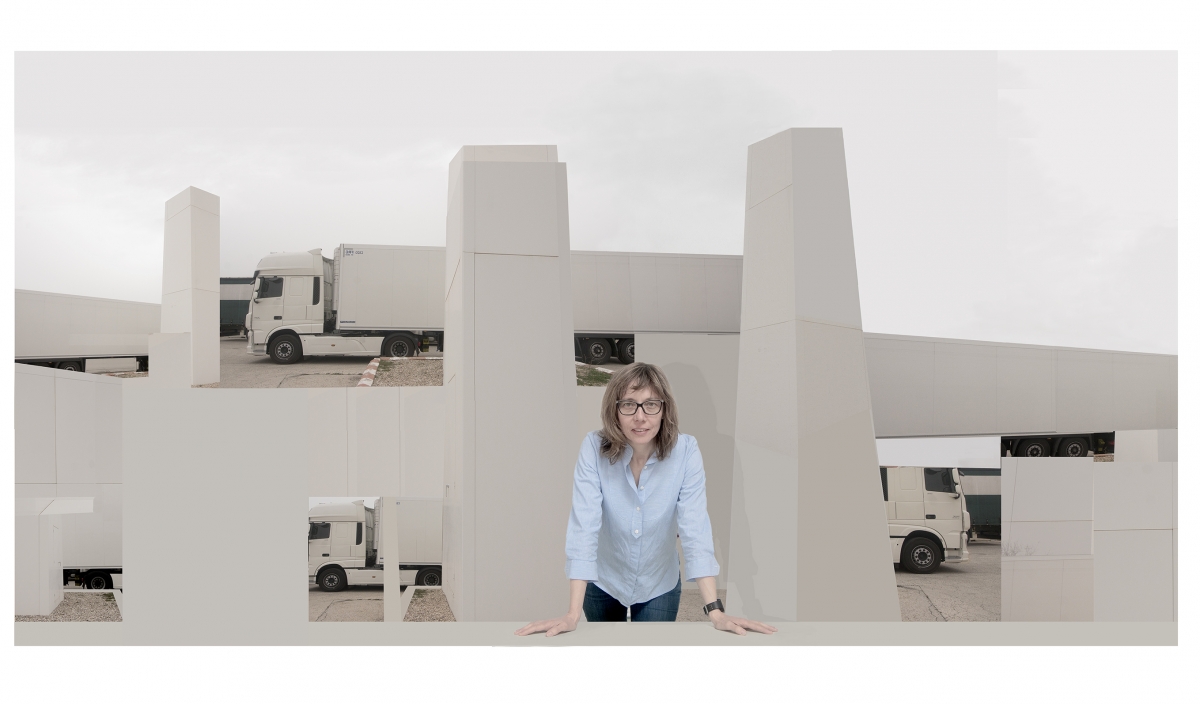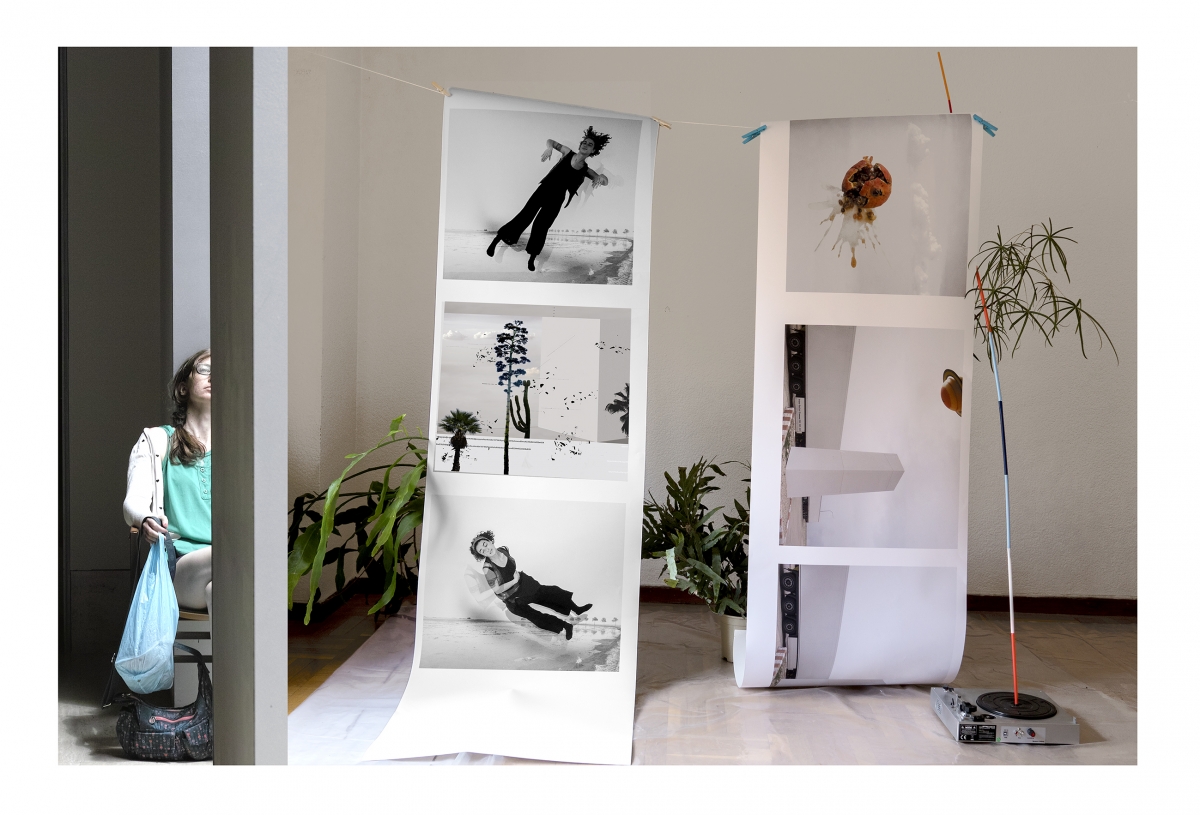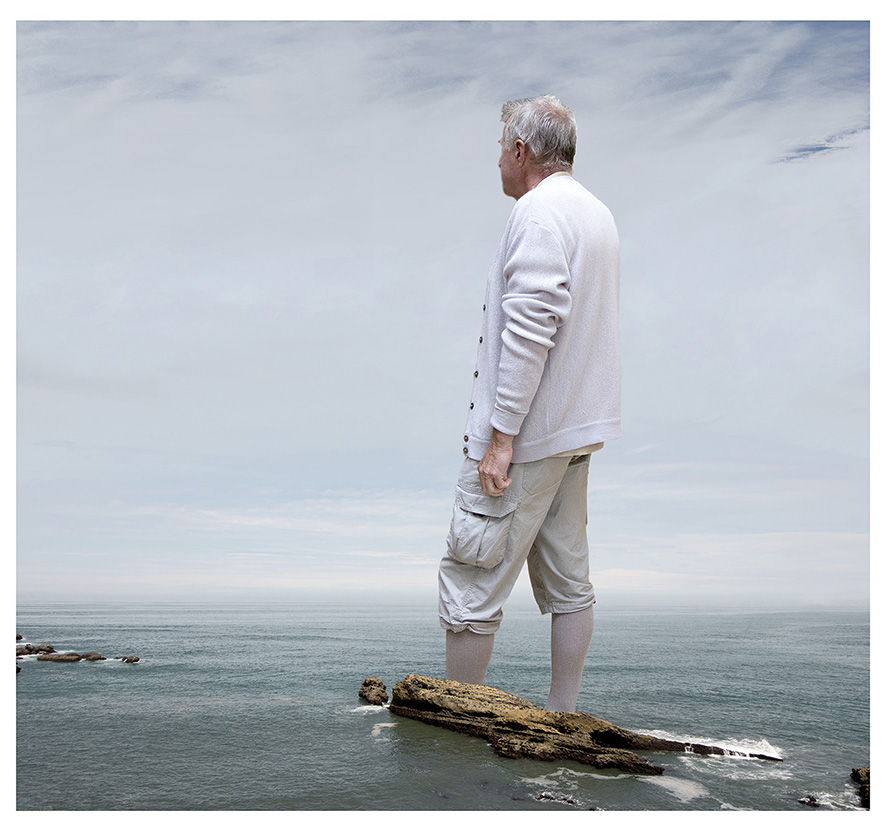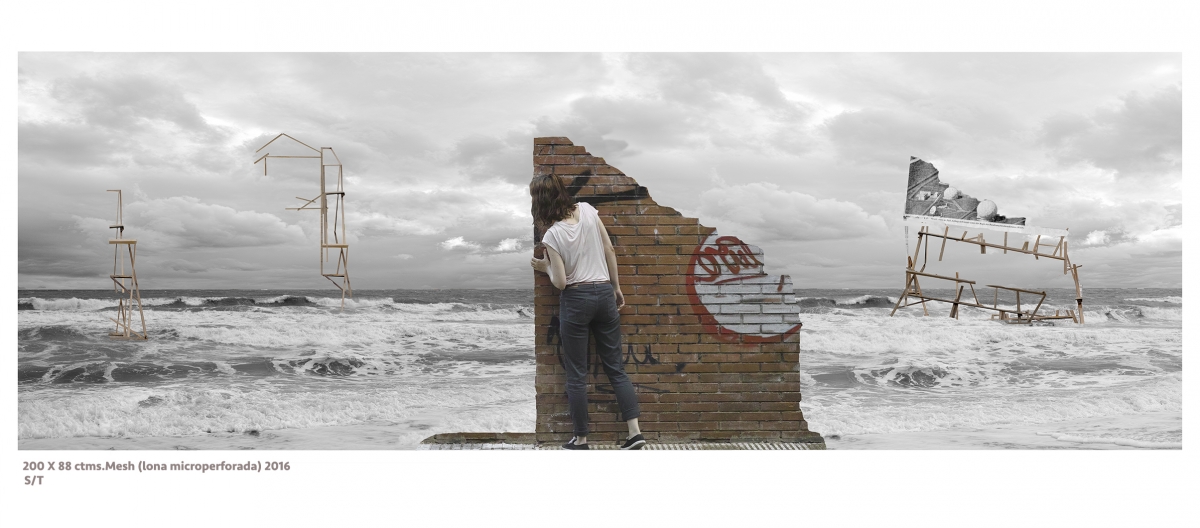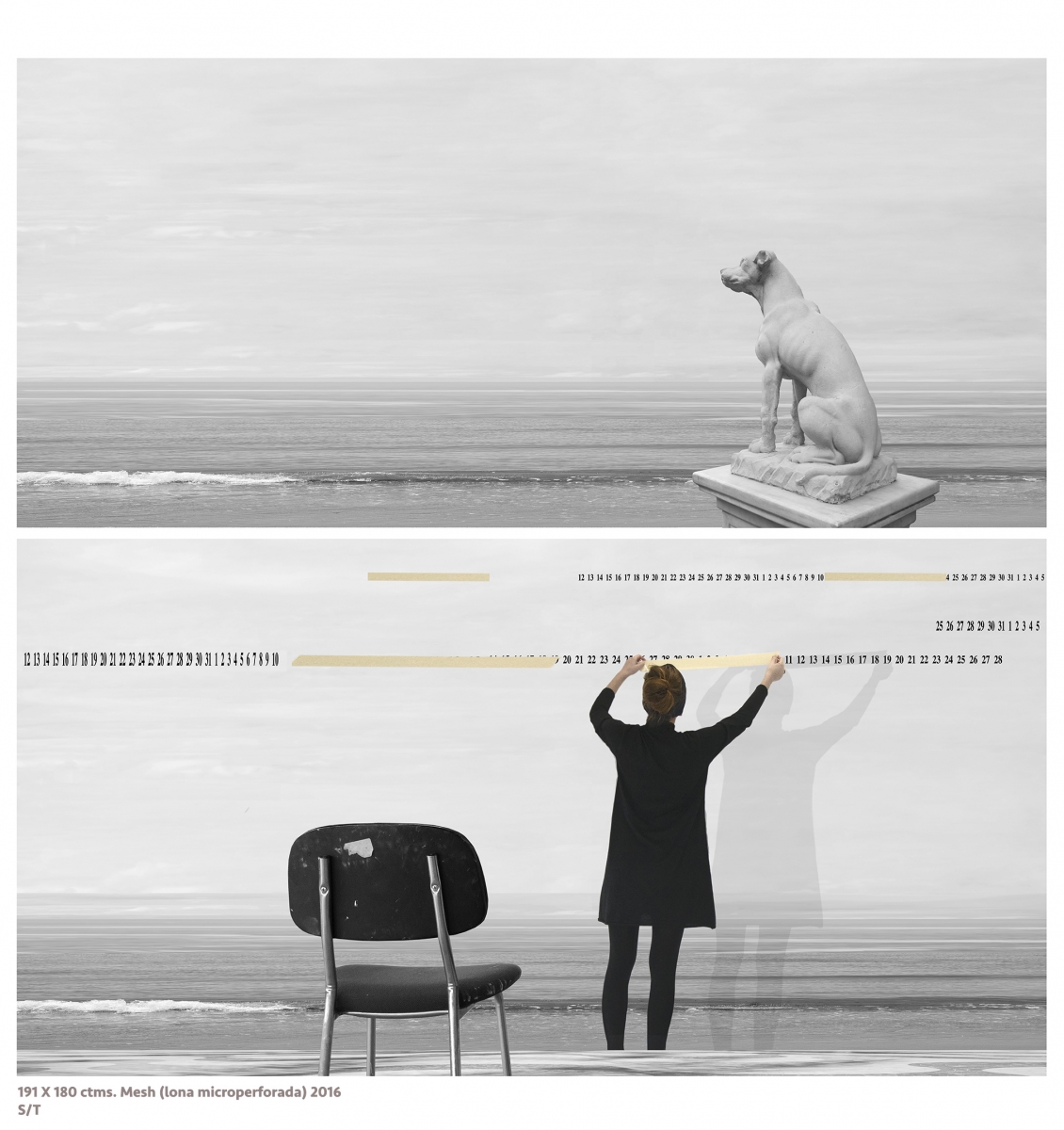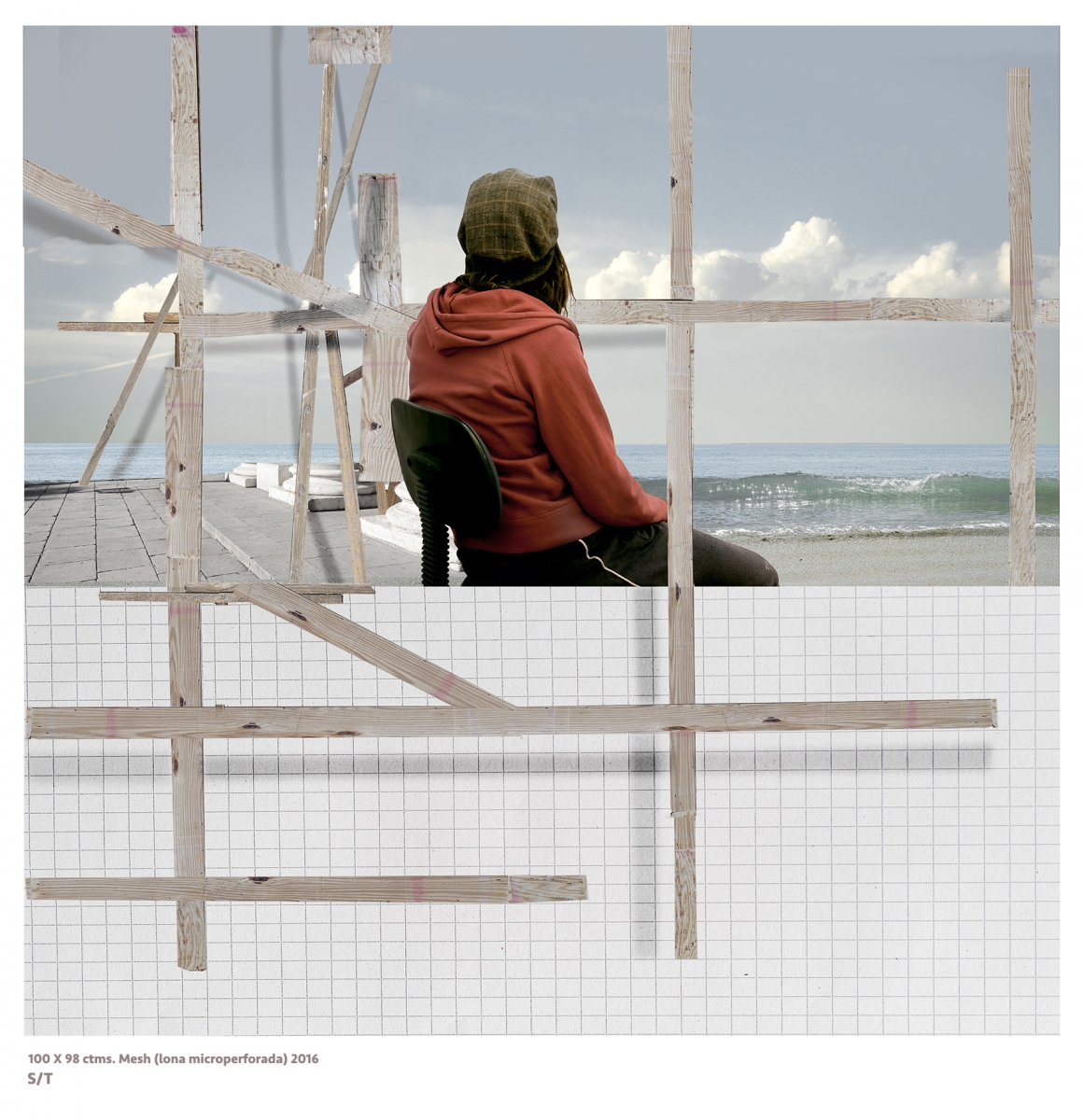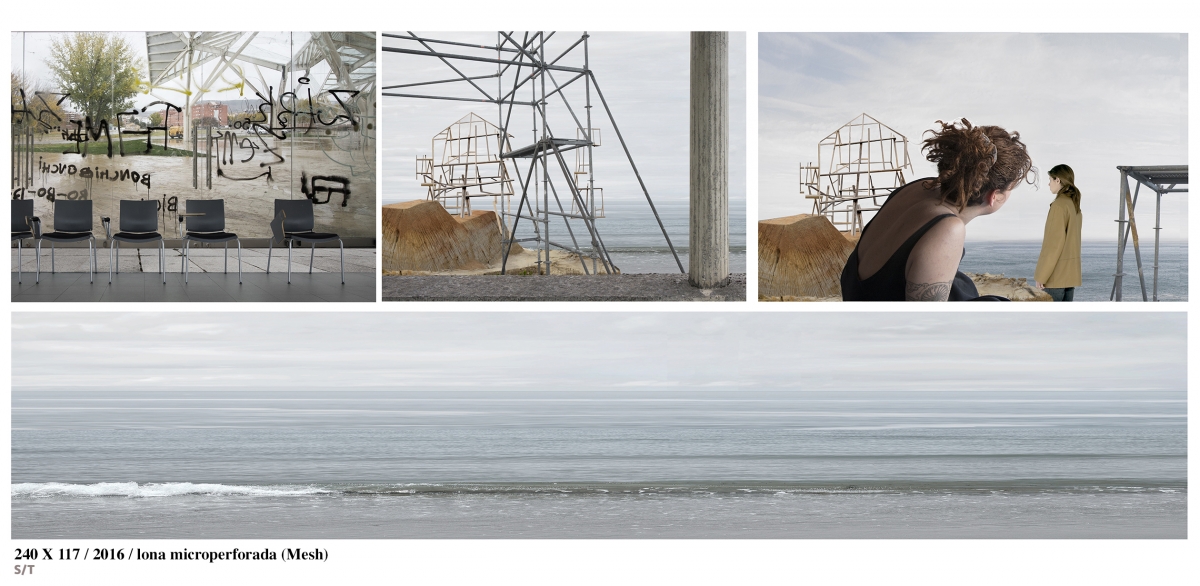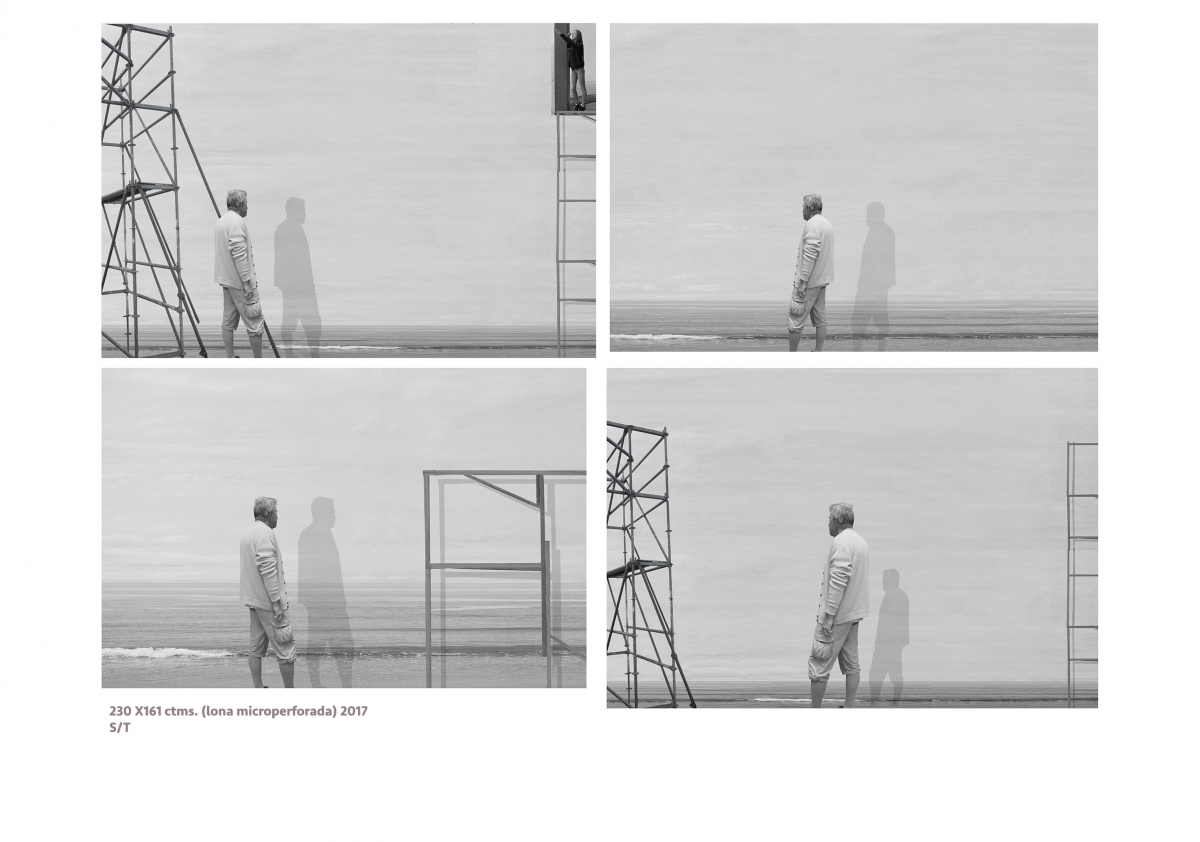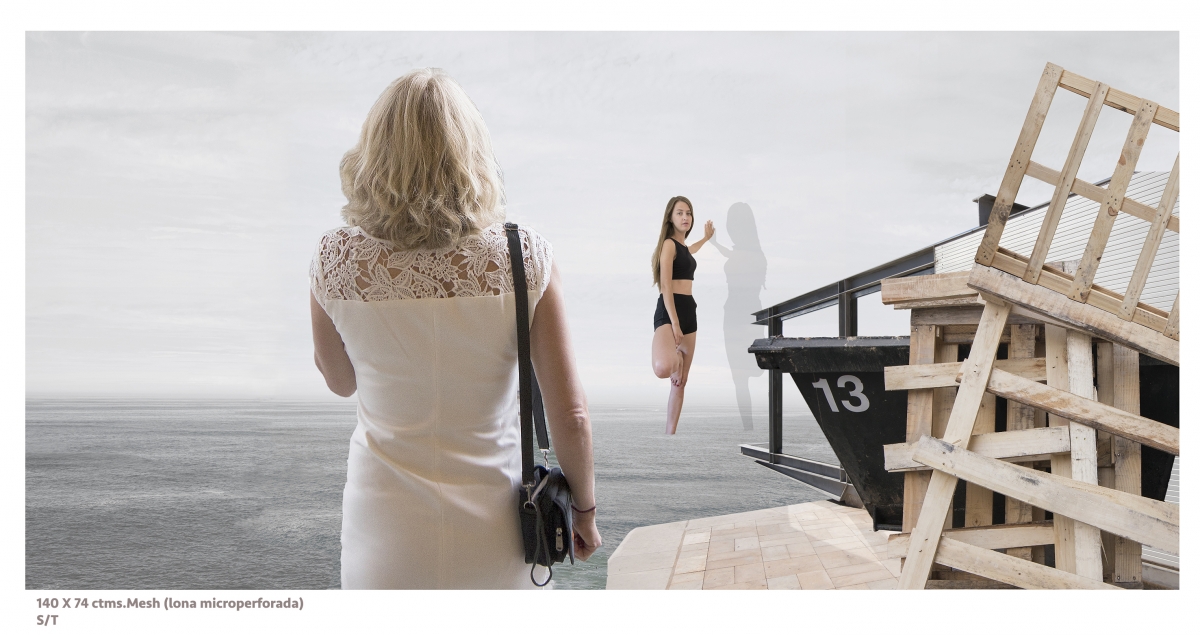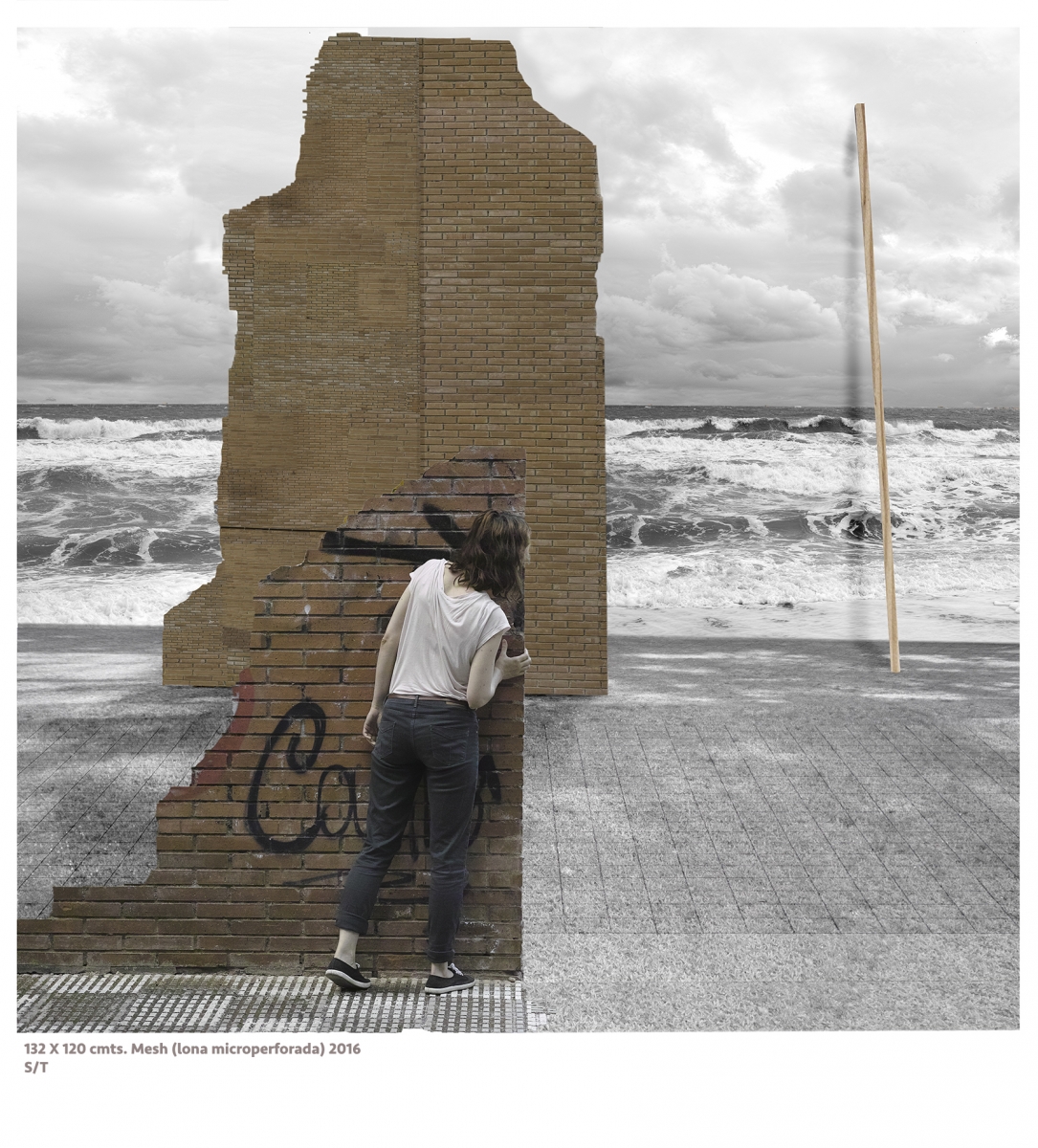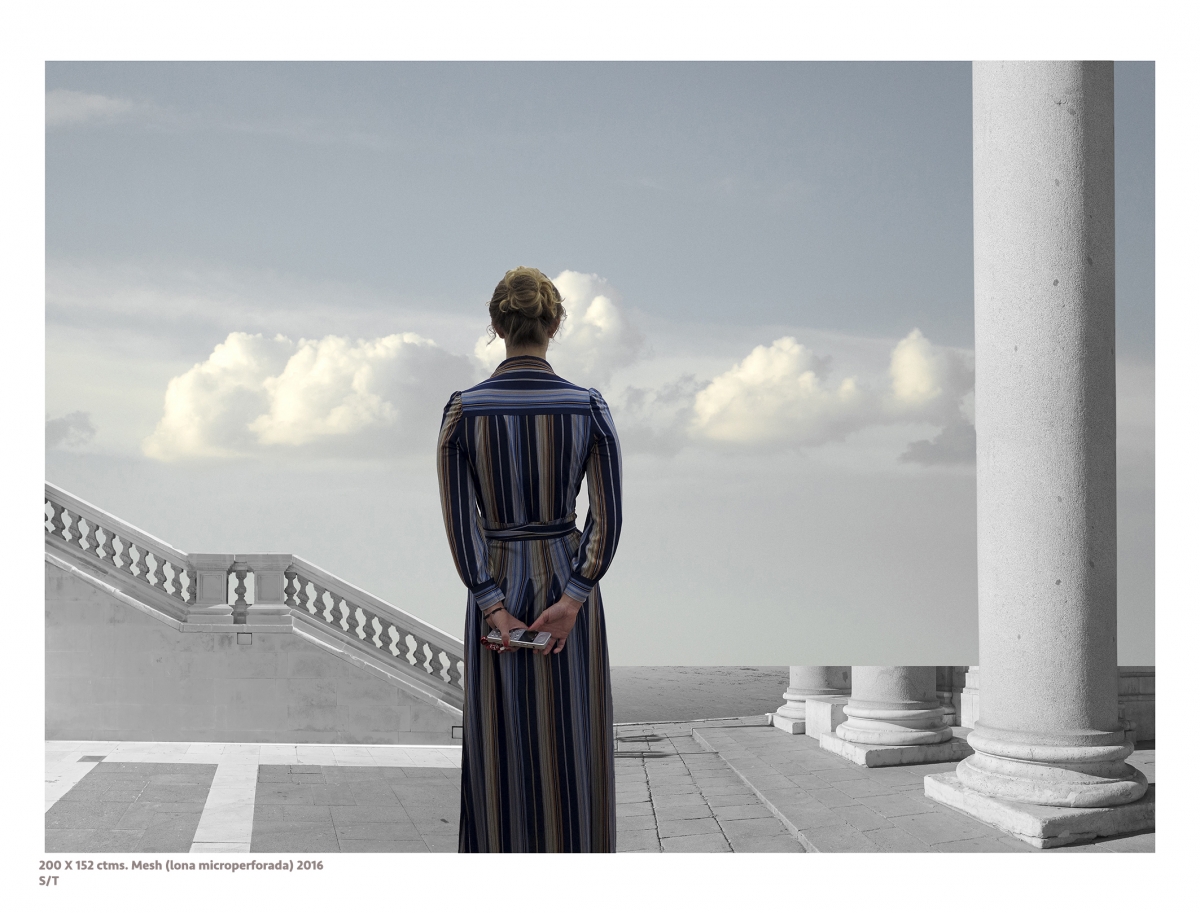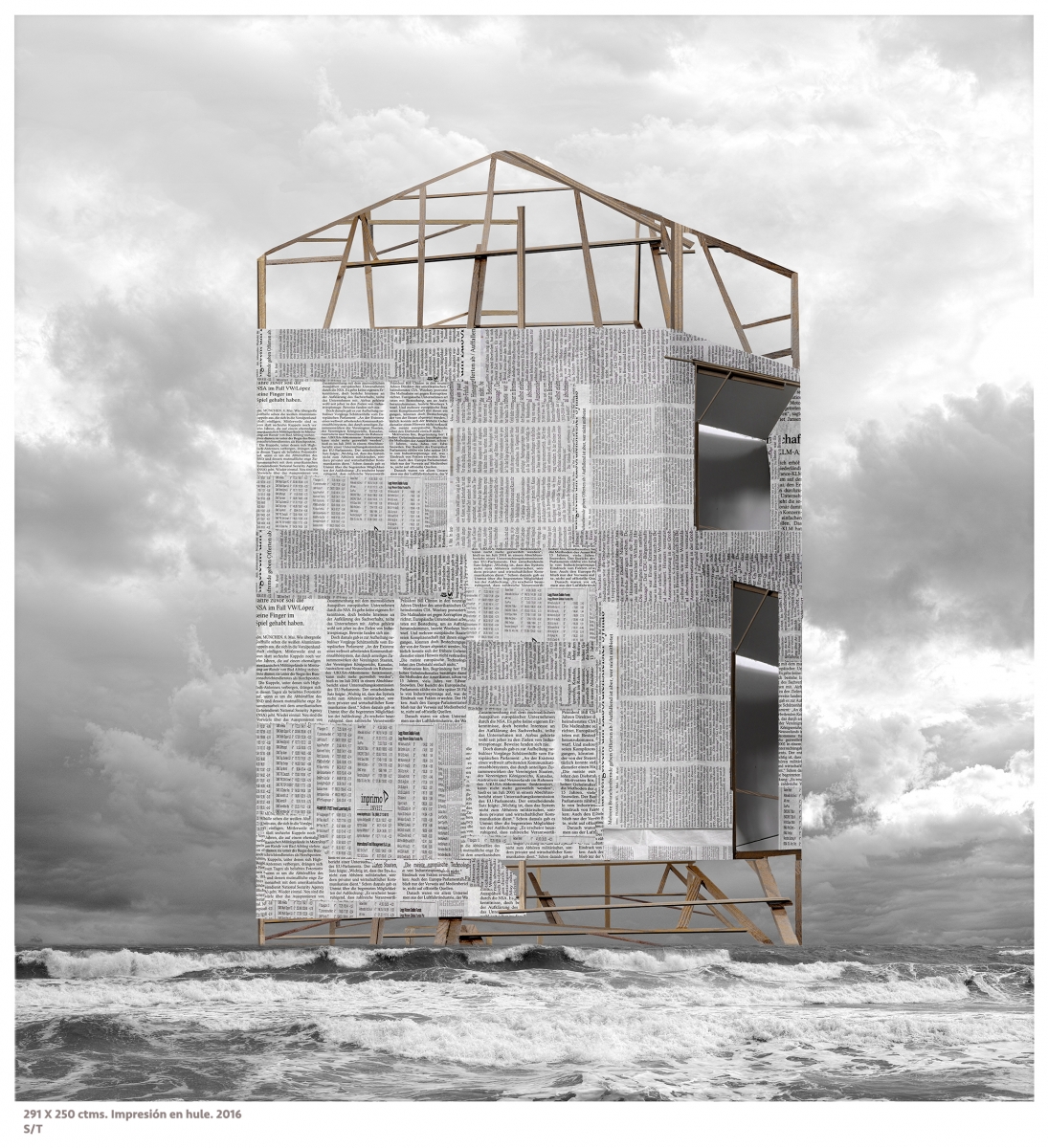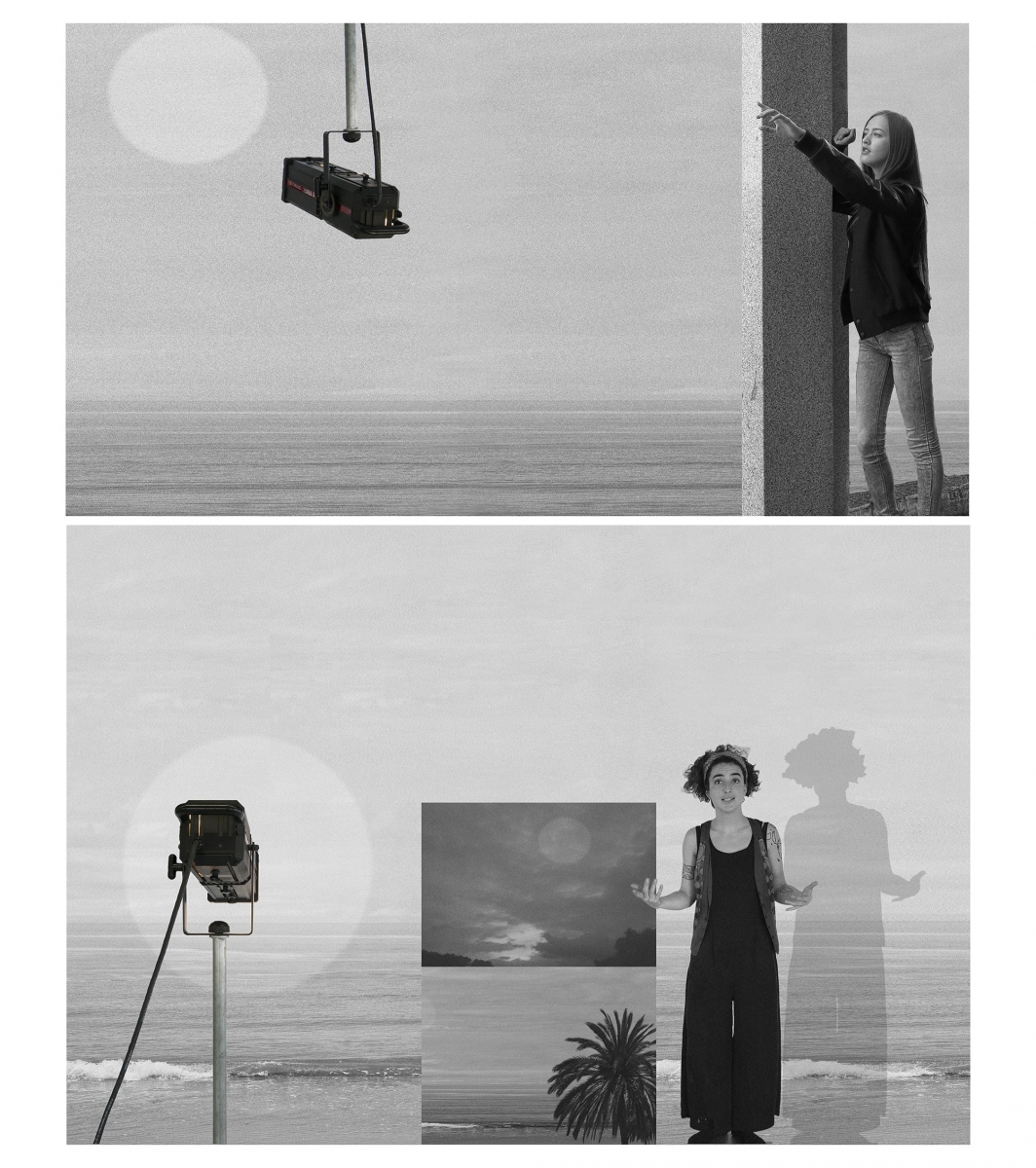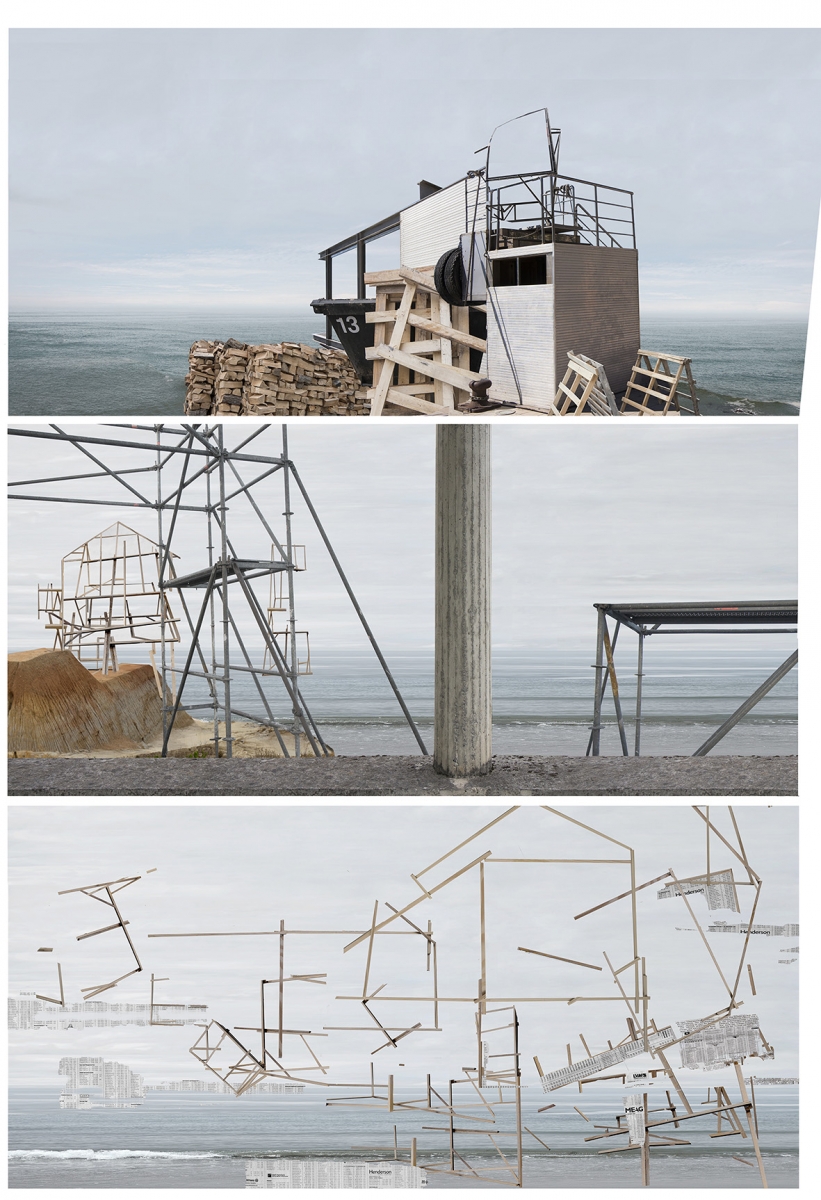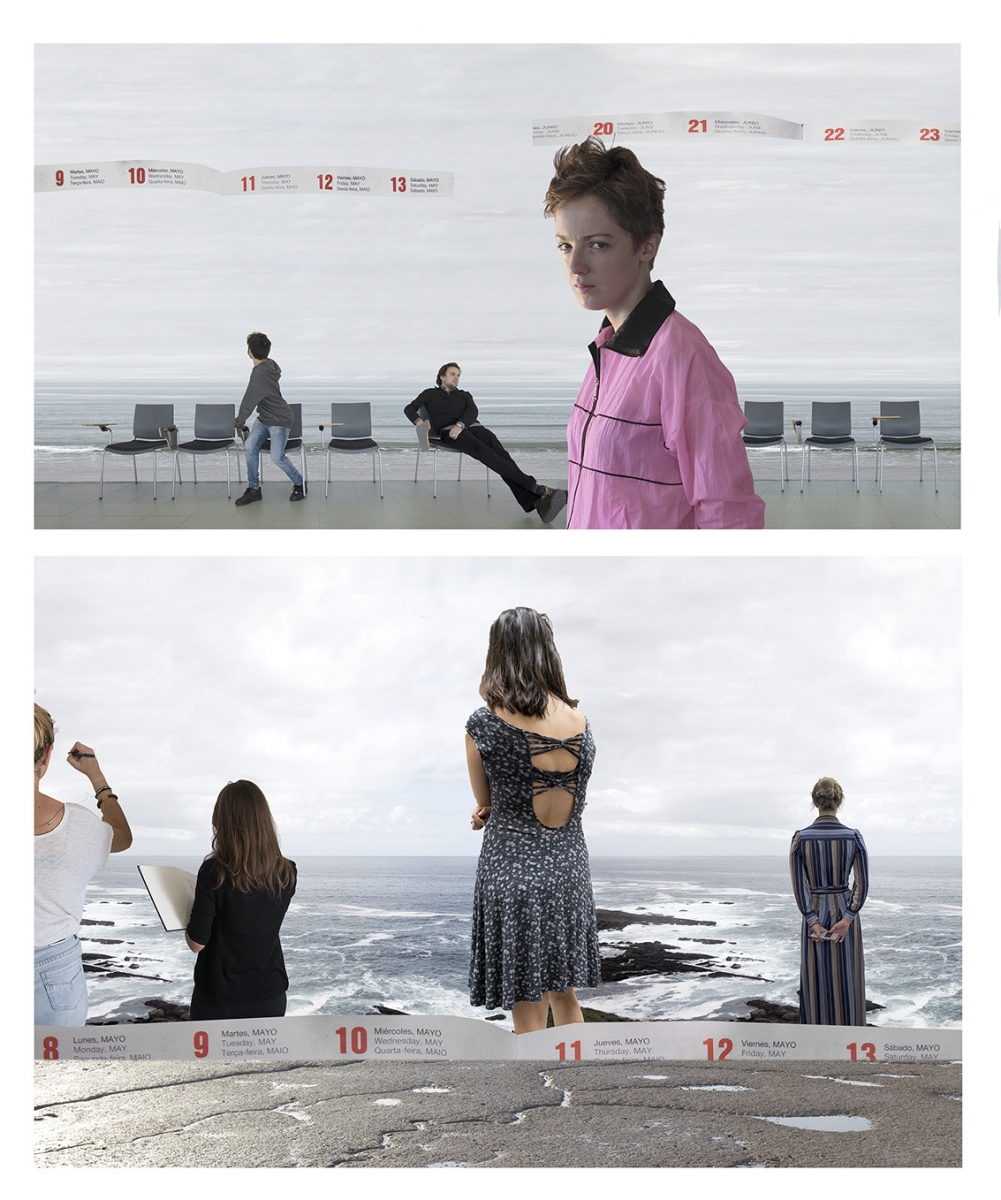Timothy Murray
The future ain’t what it used to be.
Yogi Berra
We need only position the imprint of new media on the future of cinema to appreciate the depth of the maxim voiced by that philosophical icon of American pop culture, Yogi Berra. While Yogi isn’t likely to have had the ontology of cinema in mind when he mused about the paradox of time’s travelling, his famous quotation certainly seems like an apt epigraph for reflection on the temporal folds of Medium Philosophicum. Whether we think of the transfer of light from Lacan to Kuntzel or the psychic shift from projection to surface in Xu Bing, the perception of cinema’s future on the threshold of new media depends as much on the continuous foldings of temporality as on cinema’s linkage to the many apparati sustaining its memory: perspective, point of view, montage, anamorphosis. While the same construction of cinema’s point of view continues to be developed across the interstices of new media, it is, as Deleuze forewarns in The Fold, no longer the same point of view nor the same cinema, now that both the figure and the ground move fractally in cyberspace. How might this shift impact our consideration of temporality itself as the fundamental framework for any thought of cinema?
While Yogi Berra cannot claim responsibility for this chapter, his prediction that the future ain’t what it used to be certainly speaks to the temporal paradoxes encountered throughout the folds and thresholds of Digital Baroque. Indeed, the paradox of temporality in the medial age has been so crucial to the trajectory of this book, as well as to my own fascination with the baroque intersections of new media and cinema, that I would like to focus on the enigma of the return of cinema’s future. For this purpose, I’ve chosen to frame this chapter around consideration of a philosophy of cinema’s thought that I now realize to have shaped the previous chapters far more than I had anticipated. It has been thirty years since Gilles Deleuze published the second half of his project on cinema, Cinema 2: The Time-Image, that so altered the figure and ground of the thought of cinematic image and time. While my deep affiliation with a wide range of thinkers and artists, from Louis Marin, Jean-François Lyotard, Jacques Derrida, and Anne-Marie Duguet to Thierry Kuntzel, Derek Jarman, and Xu Bing, precludes me from identifying this book as “Deleuzian,” the very project of Medium Philosophicum remains deeply indebted to Deleuze’s many evocations of the paradoxical impact of Deleuze’s thinking on the incompossible folds of new medial art. So, I would like here to time-travel into the future with Deleuze, but not so much via the hallucinations of patriarchal voice as through the temporal folds of time’s medial image.
Future cinema and the split of time
What will have been the result, I would like to ask, of looking back to Deleuze’s cinema books from 30 years forward or looking forward from Deleuze’s cinema books 30 years into the future? One response could be paradoxical, one that verges on nostalgia for the future past of cinema: the future ain’t what it used to be. Another would entail a project of retrospective thought as a critical activity that toggles between past and future, one that positions us smack within the crystal of cinematic subjectivity, within what Deleuze calls the paradoxical commonplace of time, which I appreciate as the core of Medium Philosophicum. Time’s crystal, or the crystallization of time, constitutes the structural paradox of temporality, its activation of passing presents, in which one moment goes while another comes to shape the future, all the while preventing the past from falling into the inaccessible depths of the totally obscure. Deleuze consistently attributes his celebration of the paradoxical commonplace of passing presents to the project of Henri Bergson by building his notion of the time crystal around Bergson’s belief that time itself is subjectivity. Rather than arguing that the subject creates time through thought, Deleuze joins with Bergson in maintaining that the subject is in time (as in fantasy). Deleuze’s approach to cinema is guided by his rather simple formula of cinematic time, or time’s subjectivity: “it is in the present that we make a memory, in order to make use of it in the future when the present will be past” (Deleuze, 1989, p. 59). Put similarly also some thirty years ago by Jean-François Lyotard, in contemplating the paradoxical event of time within the environment of new technology’s expansion,
Because it is absolute, the presenting present cannot be grasped: it is not yet or no longer present. It is always too soon or too late to grasp presentation itself and present it. Such is the specific and paradoxical constitution of the event. (…) The event testifies that the self is essentially passible to a recurrent alterity. (Lyotard, 1991, p. 59)
The body or shape of time, the event within which we find ourselves, is itself something of a phantom oscillating between the not yet and no longer, virtual but graspable in the actual. Deleuze insists that this phantom has been fundamental to cinema, haunting it and its spectators, until the arrival, that is, of “modern cinema” which has given form to the virtual image of time. The time of cinema always already awaits its passing actualization in the future present of modern cinema.
Future cinema and the split of time. These two themes which find voice in Deleuze’s second volume, The Time-Image, are what seem to have seized the attention of philosophers and the imaginary of media specialists in the thirty years since the arrival of the cinema books. To some extent, we can situate the explosive contemplation of time with the coming and passing of the new millennium. Recall, for example, how the blockbuster exhibition, “Le temps, vite!,” with which the Centre Pompidou ushered in the year 2000, was designed to lead the spectators through a concluding installation space, “The Future of Time.” This show was accompanied by a flood of timely writing in France: for J.-B. Pontalis, Ce temps qui ne passe pas (Pontalis, 1997); Georges Didi-Huberman writes Devant le temps (Didi-Huberman, 2000); André Green finds himself ruminating on Le temps éclaté (Green, 2000); while in the United States Mary Ann Doane reflects on The Emergence of Cinematic Time (Doane, 2002) which was followed by Elizabeth Grosz’s The Nick of Time (Grosz, 2004) and preceded by Cinema Futures (…) The Screen Arts in the Digital Age (Elsaesser & Hoffman, 1998), a collection edited by Thomas Elsaesser and Kay Hoffman. These books on the thought of time arrive in fortuitous conjunction with two major exhibitions that solicited us to contemplate the place of Deleuze’s “modern cinema” now that it too seems to have passed into the future. The massive 2003 exhibition at the ZKM in Karlsruhe, Germany, “Future Cinema,” curated by Jeffrey Shaw and Peter Weibel, was followed by a more focused and elegant show in Lille, France, “Cinémas du futur,” which was curated by Richard Castelli for the festival, Lille 2004, (Shaw & Weibel, 2003); (Castelli, 2004).
The emergence of time in these many reflections and exhibitions provide something of a paradoxical commonplace for consideration of Deleuze’s acknowledgement of, yet obvious discomfort with, the movement of his cherished “modern cinema” into the future of “future cinema” itself. I’m referring to his passionate remarks, concluding Cinema 2, on the rapid acceleration of developments in electronic and digital media. His acknowledgment of the potentiality of video and digital cinema remains tempered by his affectionate ties to the philosophical vigor of cinema.
The modern configuration of the automaton is the correlate of an electronic automatism. The electronic image, that this, the tele and video image, the numerical image coming into being, either had to transform cinema or to replace it, to mark its death. (Deleuze, 1986, p. 265)
In an interesting way, Deleuze positions new media at the interval of cinematic time, as the carrier of both cinema’s passing and its future. On the other hand, the electronic future carries for him a certain threat of deadening violence against his most cherished aspects of cinematic thought. “It is the time-image which calls on an original regime of images and signs, before electronics spoils it or, in contrast, relaunches it” (Deleuze, 1986, p. 267).
It is hardly worth debating that digital technology and sensibilities deriving from new media have transformed the cinematic image, its space, and perhaps even its time. Consider, for instance, the multimedia installation of Renate Ferro, Screen Memory (2004), in which footage of family Super 8 film, shot in the 50s, is digitized, reserialized, and projected silently in different sequences on the façade of a miniature building (fig. 1). The footage plays on the amateurism of the patriarchal control of the camera and its contrast with the domestic activities of the play and the labor it records. At the same time, the placement of the homelike structure casts gigantic shadows onto the dissipating footage that spills onto the adjoining walls. Sound does fill this space, but it’s precisely the sound of the Super 8 projector eating and tearing the brittle film as it passes through the sprockets, one final time, for digitization. To transfer this film of the past into the numerical future requires its literal wasting in the present of artistic production. The installation doubly complicates the Deleuzian celebration of the cinematic screen, moreover, by luring visitors across the threshold of the structural shell where sensors illuminate a miniature table, set for tea. Inside the visitors listen to the soft sounds of the artist’s competing narratives not about cinema itself but about memories of the primal scene of domestic work and familial jouissance that transfer the passing of cinema into the register of other places, other screens. Screened are memories marked by the differences of gender, authority, and popular culture as they are registered particularly by clustered groupings of visitors, some hailing from the moment of the Super 8 projector and the Buick Super Riviera, others from the more recent era of the Super 8 Motel and the digital Super Hero. Here, too, inside and outside, the visitors’ bodies disrupt the enveloping projections to insert themselves phantasmatically into the fabric or screen of the installation. The purity of cinema, even in its lowly amateur guise, is sullied by the silhouette, carriage, and subtle interactivity of the viewers. While Ferro certainly places cinema’s subjects in the space and place of time, and obviously transfers the stock of cinema into the digital future, she does so with artistic indifference to the ontological and even literal preservation of the very stuff of cinema. When cinema here crosses into the numerical code of archivization, its figure and ground shifts in rather colossal ways.

Figure 1. Renate Ferro, Screen Memory, 2004.
Ferro’s multimedia installation, which is rather fundamental from a computing standpoint, works to highlight the extent to which even basic convolutions of electronic and digital media easily violate the conventions of the screen and alter the spectatorial habits of the cinematic viewer. Screen Memory can be said to exemplify how Deleuze’s concern about the impact of electronic and new media on the thought of “modern cinema” seems to go in two directions, one back towards ontology, the other forward toward the uncertain valance of “the future” itself.
To some extent, Deleuze seems to share a certain defensive identification with the ontology of cinema that similarly haunts practitioners and theorists faced with the dissolution of its historical purity. This voiced no more poignantly than by Mary Ann Doane in The Emergence of Cinematic Time:
A certain nostalgia for cinema precedes its “death.” One doesn’t —and can’t— love the televisual or the digital in quite the same way (…) It is arguable that cinephilia could not be revised at this juncture were the cinema not threatened by the accelerating development of new electronic and digital forms of media. (Doane, 2002, p. 228)
In a particularly combative line concluding Cinema 2, Deleuze transforms Doane’s threatened nostalgia for the romance or love of cinema into the more forceful, agonistic discourse of a philosopher confronted with the even higher stakes of the end of time’s crystal itself: “The life or afterlife of cinema depends on its internal struggle with informatics” (Deleuze, 1986, p. 270). These rather urgent words of resistance are written paradoxically by the same philosopher with whom so many artists and theorists frequently dialogue to articulate notions of a “philosophy after the new media” (Rodowick, 2001). Readers who cherish Cinema 2 for its elaboration of the virtual may have shared my surprise upon first falling on these combative passages at the very moment when a more committed embrace of the many faces of new media seemed possible, if not logical. For couldn’t Deleuze have recognized more unequivocally in the emergent new media a shift in the principal variables of time and rhythm that his book, The Fold, welcomes in the electronic experimentations of Boulez and Stockhausen?
It is almost as if Cinema 2 is haunted by the kind of anxious recurrence of the temporal phantom staged by the Chinese new media artist, Du Zhenjun, in his interactive installation, I Erase Your Trace (2001). In this computer driven piece, visitors are invited to walk across a platform whose surface doubles as the screen of cinematic projection. The visitors’ footsteps trigger sensors that activate a computerized program of hyperactive avatars who scrub away the residue of the footprints (fig. 2). Every time another step is taken, the avatars reappear with the same passionate momentum in an effort to wipe clean the historical screen of cinema. If considered from the logic of cinema’s internal strife with digitality, it is almost as if the avatars are struggling to wipe away the traces of analogue visitation itself and to efface the corporeal specters of cinema’s passing presents. The movement of passing presents summons back the virtual future with a vengeance. Each step into the “not yet” summons the possibility of the “no longer.” While I Erase Your Trace could be read as a paragon of analogical resistance to the digital, it can be understood just as easily as a celebration of the interpellation of the virtual and its complex interface with the actual. It is almost as if Du engages in the Deleuzian logic of time’s paradoxical doubling, one that contrasts the presents that “pass and are replaced” with an emergence from the scene that “launches itself towards a future, creates this future as a bursting of life” (Deleuze, 1986, pp. 87-88). In Du’s work, the virtual and its paradoxical reality seem to spring out of nowhere in sync with the advance of the curious spectator, one who roams the exhibition space in search of, as Richard Castelli might say, the “cinémas du future.”

Figure 2. Du Zhenjun, I Erase Your Trace, 2001.
In order better to appreciate Deleuze’s other motivation for his struggle against new media, we need to exercise caution, however, about how to gauge the valence of “future” in its cinematic context. For some theoreticians of new media, the notion of “future cinema” would be understood as merely a metaphor for something much more concrete, say the place of cinema in cyber or virtual space. Lev Manovich, for example, emphasizes what he considers to be a fundamental characteristic of cinema in the digital era, the shift from time to space.
Film montage introduced a new paradigm —creating an effect of presence in a virtual world by joining different images of time. Temporal montage became the dominant paradigm for the visual simulation of nonexistent spaces. As the examples of digital composing for film and Virtual Sets applications for television demonstrate, the computer era introduces a different paradigm. This paradigm is concerned not with time, but with space. (Manovich, 2001, pp. 154-155)
It could be argued that Deleuze dialogues futuristically with Manovich when he contextualizes his concluding defense of cinema at the end of Cinema 2 in relation to what he calls “this complexity of informational space” (Deleuze, 1986, p. 269). In speaking admirably of the films of Syberberg, he commends the non-totalizable complexity that surpasses individual psychology while rending impossible any sense of a spatial “whole.” In view of Deleuze’s emphasis on cinematic thought as what surpasses the totalizable subject, David Rodowick even praises Deleuze as “a cartographer of thought” (Rodowick, 1977, p. 174). But Rodowick does so based on his appreciation for how Deleuze insists that such non-totalizable complexity finds its representation not so much in spatialized or even subjective terms as in machinic ones: automata.
To be a cartographer of thought for either the movement or time-image means tracing out their distinct planes of immanence, their concepts relating movement and time to thought, and the noosigns each gives rise to as particular raccordements of concepts and signs. Only in this way will we understand what new powers of thought arise (…) The spiritual automaton is machinic thought, but this means that the cinema is less a technology than a téchne or poesis. (Rodowick, 1977, p. 175)
Deleuze’s concern over the potential dilution of “modern cinema” does not pertain to the digitalized transformation of space, perhaps a consideration more pertinent to the rise of classical cinema’s cinema-mouvement, but with its potential transformation of our investment in the thought of time itself. It is to protect the very stakes of time and the spiritual automaton as machinic thought that Deleuze circles his cinematic wagons.
Particularly at issue is the shifting valence of the future in the age of electronic imagery and automated information. The future of “future cinema” is nothing close to being parodically metaphorical to Deleuze but, rather, constitutes the fundamental machinic constituent of new informatics itself. It is the very replication of information in relation to its anchorage in the pull of the future that, he cautions, ultimately renders its pervasive automation radically ineffective. “Information plays on its ineffectiveness in order to establish its power, its very power is to be ineffective, and thereby all the more dangerous” (Deleuze, 1986, p. 269). A helpful elaboration of such a concern with the dangerously numbing accumulation of information for information’s sake is provided in a related context by Lyotard’s The Inhuman: Reflections on Time, a book composed by Lyotard in the wake of his 1985 launching of the first major new media exhibition at the Centre Pompidou, “The Immaterials” (it is noteworthy that Lyotard was conceptualizing an exhibition of electronic arts at the same moment that Deleuze, his colleague at the University of Paris at Vincennes, was celebrating modern cinema). In the chapter, “Time Today,” which is explicitly concerned with the unrealized potential of informatics, Lyotard focuses his analysis on information culture’s privileging of the future at the expense, say, of what Deleuze calls cinema’s passing presents. Lyotard joins Deleuze in reflecting on the increasing “complexification” of new technology whose drive is the incessant recombination of information processing and data synthesis.
As is clearly shown by the development of the techno-scientific system, technology and the culture associated with it are under a necessity to pursue their rise (…) The human race is, so to speak, “pulled forward” by this process without possessing the slightest capacity for mastering it (…) The growth of techno-scientific systems (…) means neutralizing more events. What is already known cannot, in principle, be experienced as an event. Consequently, if one wants to control a process, the best way of so doing is to subordinate the present to what is (still) called the “future,” since in these conditions the “future” will be predetermined and the present itself will cease opening onto an uncertain and contingent “afterwards.” Better: what comes “after” the “now” will have to come “before” it. In as much as a monad in thus saturating its memory is stocking the future, the present loses its privilege of being an ungraspable point from which, however, time should always distribute itself between the “not yet” of the future and the “no longer” of the past. (Lyotard, 1991, pp. 64-65)
Lyotard thus joins Deleuze in wanting to short-circuit the pull of computational complexification in order to reinvest in the cinematic interval of the passing presents, between the “too early” and the “too late.”
In this struggle against the informatic pull of the future, Deleuze has something greater in mind that the simple preservation of the historical promise of temporal montage, as Manovich would have it. When Manovich contrasts montage with new media, he limits montage to the logics of its articulation of the alteration of the state of the whole which Deleuze identifies with the movement-image. In Rodowick’s concise terms,
First, montage in or across movement-images is a logic of juxtaposition, connection, and linkage. Here time unfolds within movement like the cascading sections of a Jacob’s ladder. The whole is given as addition (n + I …) and time is reduced to a succession of presents (…) Second, this means that the image of the whole, no matter how infinitely large or infinitesimally small, can always be given (…) Thus the cinematic movement-image presents its indirect images of time through the forms or Ideas of montage. (Rodowick, 1977, p. 53)
Much more important to Deleuze’s concerns about new media is what he calls its need to remain open to the cinematic imperative of the “montrage” of time (Deleuze, 1986, p. 59). This is what “brings together the before and the after in a becoming, instead of separating them; its paradox is to introduce an enduring interval in the moment itself” (Deleuze, 1986, p. 155). Crucial to this concept of the interval is not its logical relation to the whole but its philosophical force as irreducible and autonomous as the montrage of becoming.
Privileging the force of the fissure, the interval is indifferent to the succession of images and the chain of association attributed to montage. Here the whole (le tout) of cinematic ontology (tout cinéma de l’Etre = est) undergoes a mutation in order to become the constitutive “et,” the “entre-deux” of image and time (Deleuze, 1986, p. 235). Initially articulated in 1972 by Derrida in his analysis of the “entre-deux” of the Mallarmean fold, and then echoed Deleuze in his 1976 Cahiers du cinéma discussion of Godard’s Ici et ailleurs, the “and” resists the ontological grounding of the copula to be:
Neither one thing nor the other, it’s always in between, between two things; it’s the borderline, there’s always a border, a line of flight or flow, only we don’t see it, because it’s the least perceptible of things. And yet it’s along this line of flight that things come to pass, becomings evolve, revolutions take shape. (Deleuze, 1995, p. 45)
Or, as stated succinctly by Derrida, “the medium of the entre has nothing to do with a center” (Derrida, 1981, p. 212). Running counter to the rationality of montage’s juxtaposition and its connection to centering, this line of flight is what Deleuze lauds as an “irrational interval.” Its irrationality can be said to lie in its incompossibility with the spatial perception, linear logic of the whole, and the ordering of time.
Of course, I stress incompossibility as the figure that lies, I believe, at the core of Deleuze’s reflections on cinematic temporality. It is not by chance that I stress this notion that Deleuze takes from Leibniz to understand elements of thought and art that can fail to converge while still not negating or rendering each other impossible. Rather than either converging or remaining impossible for each other, rather than being either included or excluded, they stand in paradoxical relation to one another as divergent and coexistent: as “incompossible” (Deleuze, 1986, pp. 130-131). The effect is both to rethink cinema’s grounding in montage as the consequential flow of time, to release narration from its bondage to the truth-claim (making way for fabulation), and to insert the force of “incompossible presents” into the thought of time and its montrage. This opens philosophy to the imperceptible frontiers of the “irrational interval.” “What the irrational interval gives,” suggests Rodowick —almost hearkening back to Louis Marin’s distinction between law and force, “is a nonspatial perception— not space but force, the force of time as change interrupting repetition with difference and parceling succession into series” (Rodowick, 1997, p. 178).
Precisely the efficacy of the spiritual automaton and the irrational interval are what Deleuze fears may be muted but ultimately hopes can be delivered with equal or ideally more intensity by the new media. This leads us to rethink the question central to this chapter. Wherein lies the “future” in the art of new media? Might there be a way in which informatics combines with the artistic performance of the digital archive to reinvigorate the placeholder of the “future” itself, particularly in relation to the complexification of its informational present? In discussing various developments of the naissant numeric cinematics, which Deleuze calls “the corollary of the modern figure of the automata,” can we come to an appreciation of what he hoped might lead to its energetic transformation of cinema rather than simply its marking of the passing of cinema? Put otherwise, how might the very life of cinema depend fundamentally on an internal struggle with the stuff of informatics, on the becoming of artistic interactivity at the behest of the future?
In the context of new media art, I propose that we consider the form or event of the irrational interval in relation to a series of incompossible events: archival intensities, interactivities, coded automatons, and the returns of the future. As extensions of the time image, its fabulations and its irrational intervals, the new media image capitalizes on the complexification of information science and culture by mixing and matching its softwares and hardwares, while experimenting with the crystallized density of the digital point to foreground the extended frontiers of virtual reality (as that event of the virtual touching upon the actual). A far too rapid tour of a series of incompossible new media projects should make evident the lively and productive response of the new media community to Deleuze’s charge that it enliven, as Rodowick sums up the mission, “the virtual as a site where choice has yet to be determined, a reservoir of unthought yet immanent possibilities and modes of existence” (Rodowick, 1997, p. 204).
Archival intensities
Multiple modes of existence abound in the interactive, database installations of the Australian artist, Jill Scott, one of the digital pioneers of what I call “archival intensity.” Scott’s complex new media events call upon the sites of history, the projects of science, and the various possibilities of multimedia to solicit the users to participate collectively in her new media environments. One of her richest installations looks directly into the future from the split perspectives of multiple characters who hail from different moments of twentieth-century time. Frontiers of Utopia, mounted in 1995 and installed permanently in the ZKM in Karlsruhe, exemplifies what Scott calls her “hybrid environments.” In this piece that questions the idealism of Margaret Mead’s notion of transmigratory culture, the users have the option of interacting with eight reconstructed characters: Emma (as in the anarchist Emma Goldman), Mary (a rural sociologist in Paraguay), Margaret (a secretary in a New York design firm), Pearl (an Australian aboriginal poet), Maria (a Yugoslavian hippy), Gillian (a Marxist radical student), Ki (a Chinese physicist), and Zira (a new age programmer). Users can access the lives of these women from four terminals geared to the 1900s, 1930s, 1960s, and 1990’s. Rather than pursuing Ferro’s strategy of collapsing the experience of time on the screen memory of a cinematic construction made dense by its singularity, Scott provides her users with access to the viewpoints and historical artifacts important to these women who possess different political viewpoints from across the globe and from different moments spanning the century that marks the history of cinema. Users are able to manipulate touch screens and interactive suitcases to hear the viewpoints of the characters and to peruse artifacts, news items, and memories crucial to their time periods (fig. 3).

Figure 3. Jill Scott, Frontiers of Utopia, 1995.
Adding to the complexity of this early new media installation is a touch screen that depicts all the women gathered together at a dinner table, à la Judy Chicago. Viewers are able to touch the characters’ faces to catalyze sets of conversations between two women from different eras, locales, and imaginaries. One of my favorite exchanges is between Emma, the 30s anarchist, and Zira the 90s programmer:
Zira: We have to implement a system, otherwise the planet will die.
Emma: No rules for the hungry.
Zira: The problem is too big now. In the 90s we suffer from massive overpopulation.
Emma: The only answer is to educate the women.
Zira: Exactly for that we need a system.
What Scott’s Frontiers of Utopia makes clear to its diverse users gathered together in struggle with the differends of history is that complexification itself, the ever expanding system of technology with its mixture of archival matters and database materials, does not provide the sole answer to dilemmas of the future. While her title certainly acknowledges the pull of the future, the magnetism of her interactive objects faces the user with the enigmatic interval of passing presents. The magnetic interfaces of Scott’s suitcases, which permit the users to touch keys to material icons that catalyze conflicting narratives about their historical particularity, ground the new cinematic experience in the incompossible archives of time and space. The result is what I appreciate as a dynamic staging of Deleuze’s cherished paradox of split memory, “a memory for two people or a memory for several” (Deleuze, 1986, p. 116) “mémoire à deux, d’une mémoire à plusieurs” (Deleuze, 1985, p. 153). Constructing “undecidable alternatives” inscribed literally on the table cloth of history (entre nappes de passé), Scott far exceeds the representation of the incompossible “world-memory” so admired by Deleuze in the cinema of Alain Resnais: “the different levels of past no longer relate to a single character, a single family, or a single group, but to quite different characters as to unconnected places which make up a world-memory” (Deleuze, 1986, pp. 116-117).
Interactivities
Of course, key to the enactment of undecidable alternatives is an aesthetic practice committed to the unpredictablities ties of interactivity, a practice both that solicits the user to respond to a set of predetermined choices and that gives itself over to the users’ momentary staging of a work whose algorithms leave it incomplete. In one of the most thoughtful contributions to the gargantuan catalogue coming out of the ZKM “Future Cinema” exhibition, “The Relation-Image,” Jean-Louis Boissier reflects on the aesthetic of interactivity shaping his experiments with new media, since the days when he designed the electronic interfaces for Lyotard’s Les Immatériaux and culminating in his decade-long digital encounter with the works of Rousseau. During that time, Boissier created his interactive installations of the Confessions et Rêvéries and developed an interactive electronic version of Rousseau that was published by Gallimard. Characteristic of this digital book project is Boissier’s experimentation with video inserts of particularly fetishistic moments of the text, with recreations of the motion and movement inherent in the Rousseauesque narrative, as well as with digital reflections on the interval of time itself. The result is an aesthetic project indebted to Boissier’s particular theorization of interactivity as it dialogues with the cinema books of Deleuze.
If we can imagine relation as a form, we can conceive of a relation-image capable of being produced by a new type of perspective. To that perspective which refers to optics can be added a dimension relating to relational behavior. Within this interactive perspective, interactivity holds the position held by geometry in optical perspective. We could go so far as to say that, if perspective is that by which we can capture or construct a visual representation, interactive perspective is equally capable of seizing [saisir] or modeling relations. This interactive perspective projects relationships into a relational space. (Boissier, 2003, p. 403)
In Moments de Jean Jacques Rousseau, the reader of the text is transformed into an interactive participant of touch and sight as she moves in and out of the historical past, the current moment, and the future reconfiguration of the texts as the interactive tracking morphs the text into hypertextual fragments. Two structural features are particularly fascinating in how they overlap. One is Boissier’s insistence on experimenting with hardware and software that permits the viewer of video to move horizontally and vertically, and thus in and out of time and focus.
For all the sequences in Moments, I placed a digital camera onto a motorized panoramic head, which I had built with sufficient precision in the degrees of rotation as to achieve just such an interactive panorama. As the starting and ending positions were precisely marked during shooting, the image sequences submit themselves naturally to visual on-screen development, to looping, and to internal bifurcations. It is this equivalence of the movement with the human gaze [du regard], by controlling the movement of the image, that the reader explores each sequence. (Boissier, 2003, p. 401)
Within the video sequence itself, Boissier cuts one frame out of ten resulting in what Mary Ann Doane seems to regret as an acknowledgment of “the temporal lapse, the lost time inherent in the cinematic representation of movement” (Doane, 2002, p. 214). But rather than marshalling the cut as what Doane (2012) calls an ellipsis through which “time becomes delimitable, commodifiable, objectlike” (p. 218). Boissier stages the cut as time’s irrational interval itself, as that more baroque ellipsis that gives rise neither to objects nor to commodities but to concepts, relations, and events. Thus, the other structural device crucial to Moments is the user’s interactive fractalization of text through which time and thought are channeled to dwell in the interval of incompossibility itself. Crucial to Boissier’s project is the interface of computing and interaction that constitutes the virtual ground giving rise to the poeisis or thought of new media art.
In a computer cinema, the logical relation to the Real is not canceled or diminished, but rather transformed, emphasized (…) the various domains of interactivity open up this variability (…) an interactive object’s degree of openness is linked (…) to its increasing perfection [read, “complexification”] in the management of its internal relations (…) being able to respond to the demands of external interactions and to the mutations of its environment. (Boissier, 2003, p. 405)
While Boissier provides his users with the option of inhabiting the intervals of history, of moving between the “here” while etching a virtual hypertext of the future, other artists have seized on the internal relations of the computing machine to situate the user more solidly in the shifting intervals of passing presents.
Take the simple internet art project, “Expand,” by Shu Leah Cheang, the self-proclaimed de-territorialized internet artist, the global creator without a local address (Cheang, 2001). Published in the “NetNoise” issue of CTHEORY Multimedia, “Expand” appropriates footage from Cheang’s extravagantly parodic sci-fi porn film I.K.U., which parodies the internet proliferation of racialicized Asian porn (Chun, 2006). In this subtly machinic net.art piece, Cheang stages the interval of digital frames versus cinema frames: 30 frames per digital second, 30 frames per cinema sequence (Cheang, 2001). The yellow dial intersecting the image strip permits the user to move back and forth in time and movement between and within particular eroticized image-times, catalyzed independent image and sound tracks in the style of the noosignes. By turning the internet interface into something of a manual scratch device, Cheang permits the user to expand the narrative in shuffling mode. In dialogue with the early nineties feminist new media collective, VNS Matrix, the project is framed by Cheang’s political resistance to the male technodrive of digital complexification. Cheang writes that she wishes to “expand” VNS Matrix’s mantra, “The clitoris is a direct line to the matrix” by claiming, “The Pussy is the matrix.”
I am looking at a wireless digital mobile present with no portal to channel us; built in memory flash and gigabyte hard drive as delivered at birth; genetic mutation for the ALL NEW GEN. The merge is complete. We ride on the fantasy. Living comfortably with the monster within, I assign my body as a self-programmed, self-generative sexual unit. This body functions with an operating system that requires version update and memory upgrade. The unlikely future has come and gone. The retro future could be the next comeback. (Cheang, 2000)
While Cheang’s net.art depends on the retro-future fantasy of a self-generative sexual unit, the Japanese artist, Masayuki Akamatsu, takes for his digital subject the transferential split of time itself. In his installation Time Machine!, the users approaching the console of this piece have their portraits image captured by a video camera and transferred onto a projection facing them (Akamatsu, 2002). The image itself then becomes pixilated, extended, multiplied, and inverted in relation to the user’s manipulation of a trackball (fig. 4). A turn to the left travels the image back into time where it seems to split into a kind of unconscious free-fall. The presence of the moment here gives way to the fracture and dislocation of time travel —a state previously known to man only through the unconscious or through literary and cinematic fiction. A turn to the left travels the image back from the future into the present. Exhibited here, however, is a present whose image structure never appears to be constant. Through pixilated imagery that moves right, into the future, it remains open to the vicissitudes of the video image’s instantiation in time and the subject’s entrapment in the doublings of time itself. Ask yourself if you’re not witnessing something of a digital image-crystal that embodies what Deleuze calls the most fundamental operation of time:

Figure 4. Masayuki Akamatsu. Time Machine! 2002.
time has to split itself in two at each moment as present and past, which differ from each other in nature, or, what amounts to the same thing, it has to split the present in two heterogeneous directions, one of which is launched toward the future while the other falls into the past. (Deleuze, 1986, p. 81)
To be “in” the machinic state of time, in this sense, is to be always, confronted with the touch, turn, vision, and thought of the interval as the recombinant turning of time.
Coded automatons
It should be no surprise, however, that such machinic display would be cited by many philosophers of cinema not as a sign of cinema’s lasting into the future but of its ontological passing in the present. One philosopher who has written elegantly on Deleuze’s cinema books sets his sites directly on digital autopresentation as a procedure that threatens the promise of cinematic memory. Recalling Deleuze’s expressions of digital ambivalence, Jacques Rancière warns that
Information is not memory. It is not for memory that it accumulates; it labors only for its own profit. And this profit is that everything is immediately forgotten for the affirmation of the sole abstract truth of the present and that it affirms its power as the only thing up to this truth. The reign of the informational present rejects out of hand, as unreal, what is other than homogeneous process and what’s indifferent to its autopresentation. (Rancière, 2001, p. 202)
This is precisely the same sort of logic with which Deleuze voices his caution about informational culture at the conclusion of Cinema 2. To Deleuze, the autopresentation of new media threatens the liveness of cinematic automata that invigorates modern cinema with a new spirit. What he calls the new electronic automatism threatens to dissolve the cinematic inspiration of dreams and mystery into the neutral zone of random information bits indiscriminately traversing the wired membrane of gawkers and insomniaques (Deleuze, 1986, p. 265).
Yet, Deleuze is not ready to abandon the allure of a newly constituted cinematic object, one that is in perpetual flux on the data screen through which a new image can spring up from any point of the preceding image. Losing its directional privilege, the organization of cinematic space moves out of the theatre into the fractal zones of high speed ports, mobile computing, global positioning interfaces, and, more frequently, embedded information chips. Here the admiration for the colossal cinematic screen gives over to the allure of the miniaturized information tablet, an opaque surface carrying instantaneous downloads through which the sacrality of cinema’s givens are forever rendered obsolete: “information replacing nature, and the brain-city, the third eye, replacing the eyes of nature” (Deleuze, 1986, p. 265).
No artists have staged the newly coded automaton better than Mark Hansen and Ben Rubin in their collaborative project, Listening Post. In this hypnotic installation that takes on a speed and life of its own, the artists display worded bits of information gleaned by data collection software that “crawls” the web and listens to active chat rooms and online forums, news groups, and communication channels. Reaping snippets of language from the glossalia of global chat and the world memory of passing presents, the artists stream them in a series of information snapshots that flows through an interconnected grid of some 230 miniature LED screens (fig. 5). Here cinematic motion shows itself as the coded automata of the passing presents of the new data archive, the NetNoise of hits, chat, traffic, instant messaging, and web sampling. An automated voice reads some snippets aloud in a way that reenlivens Deleuze’s cherished split of pure sound from cinematic image. Is the sounding a repetition of quotation or a sounding of generated digitext separated from the installation’s whir and hiss of the movement of data bits.

Figure 5. Mark Hansen and Ben Rubin, Listening Post, 2002. Photograph by David Allison.
In the eerily greenish hues of Listening Post, information is memory, pace Rancière, but of the kind literally suspended in the interval of time’s code. As Tim Griffin so eloquently describes this enlivening digital memory archive,
The daily cycle of human rhythms becomes discernable across time zones, with domestic discussions often turning up in the morning, while politics and sex dominate the discussions at night. Over the course of weeks, one discerns a cultural subconscious. The currents of opinion and attention today, for example, might surround questions of war abroad, or ruminations on security issues at home, which accumulate like so many drops of rain. (Griffin, 2002)
Doesn’t this performative grid of so many interconnected screens and sites bring to life the very kind of automatism which Deleuze identifies as the soul of modern cinema? Is this not an electronic resurgence of what he describes as “the material automatism of images which produces from the outside a thought which it imposes, as the unthinkable in our intellectual automatism” (Deleuze, 1986, p. 179). Might not the software generators that archive the intellectual automata inhabiting the wired membranes of online data culture be themselves the new source of the surging thought of the irrational interval? Doesn’t Listening Post appropriate while resist the flattening drive of information’s surveillance to cast it in the glow of electronic Nature anew? This is the resistant interval, as David Rodowick so elegantly puts it,
That restores a belief in the virtual as a site where choice has yet to be determined, a reservoir of unthought yet immanent possibilities and modes of existence. In this respect, the utopian aspect of philosophy and art is the perpetuation of a memory of resistance. This is a resistance to habitual repetition —a time that is calculated, rationalized, and reified. But it is also resistance to all forms of commerce or exchange, whether in the form of communication or that of commodities. (Rodowick, 1997, p. 204)
Overtures to the future
Put otherwise, the utopian aspect of a philosophy of resistance might be what engages the future, the avant-garde, as more than the habitual repetition of the “pull forward” of the techno-scientific system. Such an engagement in the future has been at the forefront of the philosophical thought shaping Medium Philosophicum. Encouraging resistance to the flattening hegemony of American film and television, Jacques Derrida warns Bernard Stiegler that “the categorial imperative, the unconditional requirement of all negotiation [over the future of new forms and outlets of media] is to leave the future to the future, in all events to leave open the possibility of the future” (Derrida & Stiegler, 1966, p. 98). Could we imagine a Future Cinema in which the future of the future itself might give rise to thought exceeding the irrational interval of the passing present? Might there be a strategy of digital performance in which the machinic itself, as data automaton and screen of thought, now saturates its memory by stocking the future, to rekindle the phrase of Lyotard, by thus losing its privilege of being an ungraspable point from which, however, time should always distribute itself between the “not yet” of the future and the “no longer” of the past? What might Deleuze have had to say, for instance, about the interface with cinema of accelerating developments in affective computing, Artificial Intelligence, and interactive virtual bots? I’m thinking of the kinds of interactive agents existing as, say, Ken Feingold’s Sinking Feeling (2001), Lynn Hershman’s Agent Ruby and Stelarc’s Prosthetic Head. These are interactive web and prosthetic beings who are programmed to interact with the viewer through text and web recognition softwares. Appearing to the users as interactive agents projected on screens, they respond uncannily to conversations in the passing present. The frequent result of the exchange, via the digital vicissitudes of recognition and scansion, is a response by the virtual bot that reinscribes ontology in the thought of new media exchange. When Feingold tells the bot of Sinking Feeling, “I’m just curious what you were thinking about,” he receives a response whose playful philosophical import far exceeds the reflexivity of the question: “how do you know I AM what thinking about?” What is particularly innovative about these digital beings who embody the complexities of psychic scansion is how they are programmed as open systems —they do more than perform the archive of the past. Their performance is contingent on the archive of the future, since their responses become more complex and sophisticated as they interact with successive visitors in the future.
The unpredictable future, as something of a new irrational interval in the present, one that marks the “not still” of the present and the “no longer” of the past, may well be programmed to engage in resistance to any habitual repetition of Future Cinema. I would like to conclude by turning to one such installation, n-cha(n)t (2001) by the Canadian artist, David Rokeby, that aligns the future resistance of the coded archive with the world-memory of interactive computing. For this project, Rokeby installs a series of interconnected computers and monitors, from 6 to 12, that respond to user presence through sensors and microphones. When the computer’s sensor acknowledges the presence of the user, its video image solicits verbal interaction with the user, who then joins others in the room by speaking phrases into the various microphones attached to screens throughout the space. This public, interactive performance is rendered strangely private since the microphone works to deaden sound by incorporating it into the computer network rather than amplifying it via speakers to others in the room. Emphasizing a theoretical shift crucial to many of the artistic projects discussed in Medium Philosophicum, Rokeby hereby stages a digital dynamic of scansion rather than a cinematic performance of projection.
What’s more, the phrases uttered by the speaker interact with those internalized bits spoken by others to create something of a new emergent language, a new recombinant generator of what might come to be (…) thought. “What each computer speaks is meaningless in itself,” says Rokeby. “Taken together, these phrases chart the trajectory of an unfolding narrative of communication (…) shared non-sense shimmering with a sense of meaning” (Ditta, 2004, p. 37). What’s crucial to this constantly evolving installation is that its performance remains dependent on the overture to the future. It requires interaction with anticipated human interlocutors who themselves, as thoughtful agents of the event, constitute the “pull” of the informational future in the irrational digital interval between retro-futures. This is something of a marvelous retooling of the Deleuzian montrage, based you will recall on “the bringing together of before and the after in a becoming.” The paradox of the new retro-future is that “the after” is now inscribed as “the archival,” one awaiting the data of the future for the sake of Rokeby’s unfolding narrative of communication. His n-cha(n)t also screens on many levels the new automatism’s giving over to the will and the pull of the future, “put to the service of powerful, obscure, condensed will to art, aspiring to deploy itself through involuntary movements which none the less do not restrict it” (Deleuze, 1986, p. 266). What continues to be at play, although with a numerical difference, is the enduring interval of cinema’s internal struggle with the temporality of informatics. Crucial to this concept of the interval is not its logical relation to the whole but its philosophical force as the irreducible montrage of becoming. Might not this be the networked ground of the baroquely n-cha(n)ted thought of future cinema itself?
1 Renate Ferro, Screen Memory, retrieved from http://www.aap. cornell.edu/aapweb/galleries/galleries-past-exhibits/galleries-past-frameset.htm (2004).
2 This is the term coined by one of Deleuze’s most thoughtful readers, D. N. Rodowick (2001).
3 Du Zhenjun, I Erase Your Trace, retrieved from http://membres.lycos.fr/duzhenjun/ (2001); La leçon d’anatomie du docteur Du Zhenjun (2002).
4 Shu Leah Cheang, Expand, retrieved from http://ctheorymultimedia.cornell.edu/art/4.09/ (2001)
5 See Wendy Hui Kyong Chun’s analysis of race and cyberporn (2006).
6 Shu Leah Cheang, Expand, retrieved from http://ctheorymultimedia.cornell.edu/art/4.09/. (2001).
7 Shu Leah Cheang, E-mail Exchange with Geert Lovink, 29 December, 2000, retrieved from http://www.nettime.org/Lists-Archives/nettime-l-0012/msg00140.html (2000).
8 Masayuki Akamatsu, Time Machine!, retrieved from http://vision.mdg.human.nagoya-u.ac.jp/isea/program/E/artists/a438.html (2002).
9 This results in something like an artistic resurgence of the enlivening aspects of what Arthur Kroker calls “the will to technology” (2004).
References / Referencias
Akamatsu, M. (2002). Time Machine!. Retrieved from http://vision.mdg.human.nagoya-u.ac.jp/isea/program/E/artists/a438.html
Boissier, J.-L. (2003). The Relation-Image. In J. Shaw & P. Weibel, Future Cinema: The Cinematic Imaginary after Film. Karlsruhe: ZKM; Cambridge, Mass.: MIT Press.
Castelli, R. (2004). Cinémas du futur. Lille: BAI/Lille.
Cheang, S. L. (29 December 2000). E-mail Exchange with Geert Lovink. Retrieved from http://www.nettime.org/Lists-Archives/nettime-l-0012/msg00140.html
Cheang, S. L. (2001). Expand. Retrieved from http://ctheorymultimedia.cornell.edu/art/4.09/
Chun, W. H. K. (2006). Control and freedom: Power and paranoia in the age of fiber optics. Cambridge, Mass.: MIT Press.
Deleuze, G. (1985). Cinéma 2: L’Image-Temps. Paris: Editions de Minuit.
Deleuze, G. (1986). Cinema 2: The Time-Image, trans. H. Tomlinson & R. Galeta. Minneapolis: University of Minnesota Press.
Deleuze, G. (1995). Negotiations, 1972-1990, trans. M. Joughin. New York: Columbia University Press.
Derrida, J. (1981). Dissemination, trans. B. Johnson. Chicago: University of Chicago Press.
Derrida, J., & Stiegler, B. (1966). Echographies de la télévision: entretiens filmés. Paris: Galilée/Institut national de l’audiovisuel.
Didi-Huberman, G. (2000). Devant le temps: Histoire de l’art et anachronisme des images. Paris: Minuit.
Ditta, S. (ed.). (2004). David Rokeby. Oakville, Ontario: Oakville Galleries.
Doane, M. A. (2002). The Emergence of Cinematic Time: Modernity, Contingency, the Archive. Cambridge, Mass.: Harvard University Press.
Elsaesser, T. & Hoffman, K. (eds.). (1998). Cinema Futures: Cain, Abel or Cable? The Screen Arts in the Digital Age. Amsterdam: Amsterdam University Press.
Ferro, R. (2004). Screen Memory. Retrieved from http://www.aap. cornell.edu/aapweb/galleries/galleries-past-exhibits/galleries-past-frameset.html
Green, A. (2000). Le temps éclaté. Paris: Minuit.
Griffin, T. (2002). Listening Post Pamphlet. Whitney Museum of American Art
Grosz, E. (2004). The Nick of Time: Politics, Evolution, and the Untimely. Durham: Duke University Press.
Kroker, A. (2004). The Will to Technology and the Culture of Nihilism: Heidegger, Nietzsche, and Marx. Toronto: University of Toronto Press.
Lyotard, J.-F. (1991). The inhuman: Reflections on time, trans. G. Bennington & R. Bowlby. Stanford: Stanford University Press.
Manovich, L. (2001). The Language of New Media. Cambridge, Mass.: MIT Press.
Pontalis, J.-B. (1997). Ce temps qui ne passe pas. Paris: Gallimard.
Rancière, J. (2001). La fable cinématographique. Paris: Seuil.
Rodowick, D. N. (1997). Gilles Deleuze’s Time Machine. Durham: Duke University Press.
Rodowick, D. N. (2001). Reading the Figural, or, Philosophy after the New Media. Durham and London: Duke University Press.
Shaw, J., & Weibel, P. (2003). Future Cinema: The Cinematic Imaginary after Film. Karlsruhe: ZKM; Cambridge, Mass.: MIT Press.
Zhenjun, D. (2001). I Erase Your Trace. Retrieved from http://membres.lycos.fr/duzhenjun/
Zhenjun, D. (2002). La leçon d’anatomie du docteur Du Zhenjun: Travaux 1997-2001. Rennes: Ecole régionale des beaux-arts.
* This text has been previously published in: Murray, T. (2008). Time @ Cinema’s Future: New Media Art And The Thought Of Temporality. In Digital Baroque: New Media Art and Cinematic Folds (pp. 238-260). Minneapolis: University of Minnesota Press. Copyright 2008 by the Regents of the University of Minnesota.


